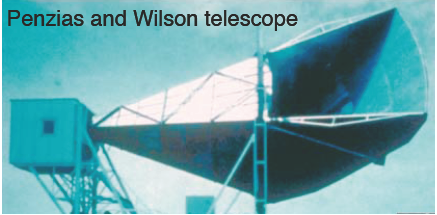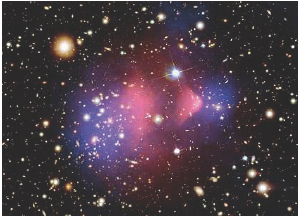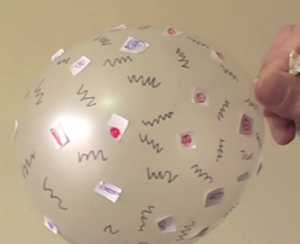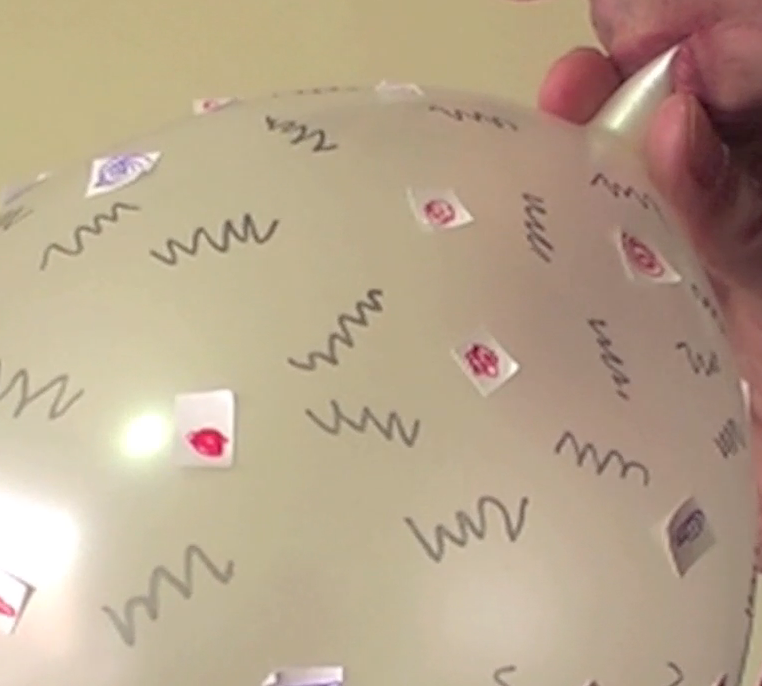Evidence
The “Big Bang Theory” had one major fact in its favour. When, in the 1920s Hubble was one of the major researchers who extended the discovery of “red shift” (see also the Doppler effect) into a calculation and discovered that the shift was proportional to the distance from us. That must mean that the most distant galaxies are going away most quickly.
In the image of the two spectra notice that the black absorption lines are identical but the colour spectrum has been shifted across.

As a visual aid imagine the universe expanding like a balloon being blown up. As the universe gets bigger the galaxies get further apart and the radiation, such as light, travelling between the galaxies, gets further stretched. All radiation is getting more stretched out getting longer wavelengths as the galaxies move further apart. (The size of the galaxies themselves does not increase, the stars within them are held together by gravity.)
It follows that if everything is moving away now, in the past it all must have been close together, or even at one instant of time, at a single point. Then everything exploded outwards!
More evidence from microwaves
The theory also predicted that there must be energy remains left over from a big band, a sort of echo of the explosion, and that could not be found. Not until, that is, Penzias and Wilson accidentally discovered background microwaves when trying to get rid of interference in a radio receiver they were building.

What was initially thought to be uniform background microwaves was later, when superior orbiting telescopes were available, found to have variations in intensity. This had again been predicted by exponents of the big bang and further enhanced the status of the theory.
Other pages of notes and video on astronomy which may be useful are:
Units of distance notes and video Measuring distance by parallax/triangulation notes and video Life cycle of stars Geostationary and polar satellites notes and video Development of the Universe after the Big Bang Real and apparent magnitude Hubble's Law and measuring distance notes and video The age of the universe notes and video Using Hertzsprung Russell diagrams notes and video Cepheid variable stars Type 1A supernova




